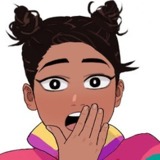StarvingGamers Games Worth Starving For (or Otherwise) in 2022
By StarvingGamer 6 Comments
All Killer No Filler SG's 2022 GotY let's go! (Oh right, also spoilers abound!)
Runners-Up (AKA the Other Games I Played This Year): 11. Splatoon 3, 12. Tiny Tina's Wonderlands, 13. Norco, 14. Elden Ring, 15. DNF Duel, 16. Vampire Survivors, 17. Signalis, 18. Hardspace: Shipbreaker, 19. Vampire: The Masquerade - Swansong, 20. Weird West
Best Old Game
Far Cry 6
First things first, Far Cry 6 has not managed to escape from the outdated, stereotypical, and unnuanced depictions of foreign locales. There's a sheen of appropriation that fills the Cuba-inspired island nation of Yara that could easily have been mitigated by putting Cuban or Latinx writers in charge of developing the world and characters. On the other hand, the game is unabashedly political. It has a lot to say about imperialism, colonialism, fascism, and even the role of violence in revolution and the people who are willing or even eager to enact that violence.
More important to my enjoyment of the game, Far Cry 6 gets away from the frustrating elements of the series that lead to me burning out after only putting a few hours into Far Cry 5. By placing the player in the shoes of Dani Rojas, a native Yaran, they avoid the western savior murder-tourist narrative of Far Cry 2-4. By pulling the camera out of first person to depict Dani on screen when moving around social hubs and during cutscenes, the game reinforces Dani as her own character. It's a helpful disconnect for when she makes decisions the player disagrees with.
Far Cry 6 also cuts back on some of the design bloat that the series had become saddled with come Far Cry 5, making it much easier to fall into the open world checklist style of gameplay that is so near and dear to my heart. The characters are zany, memorable, and lovable, and the story is bombastic and full of high-stakes melodrama. The game's politics are far from unassailable but its heart is in the right place and at least it takes the swing unambiguously which is refreshing in the modern era of "our games are not political" Ubisoft.
It's a recommendation I'd only make with a lot of caveats, but it makes me hopeful for the future of the franchise. Nobody does outpost clearing like Far Cry does, and they've finally cracked the formula on making a complicated but compelling protagonist with Dani. If they take the necessary step of further diversifying their writers' room, Far Cry 7 could really sing. Much like Dani does when a song she likes comes on the radio which is the best part of the game and once I discovered this fact I stopped using fast travel (seamless segue).
Runners-Up: Neo: The World Ends With You, Unpacking
Best Surprise
Marvel's Midnight Suns
The sell of a Firaxis-made Marvel tactics game has felt a bit odd from the start. It's not that their development chops weren't up to snuff, they had helped make tactics games a mainstream genre with the XCOM reboot in 2012, but their brand of high lethality, methodical gameplay seemed at odds with what you'd expect out of a bombastic superhero adventure. Then it was revealed that the game would actually be a card game. Then people started talking about the incredibly high ratio of narrative to gameplay. So now they were operating in a genre they had far less experience with, and focusing far more on character interaction and story than most games regardless of genre, let alone the extremely sparse writing present in all their other games.
I convinced myself the game was going to be skippable all the way up until the prerelease buzz started to hit. I'm sorry I ever doubted the people at Firaxis. Not only did they develop what has become one of my favorite card game systems, they wrote one of my favorite Marvel narratives across all mediums. I ended up putting so much time into Midnight Suns this year that despite the questionably high price point for the post-release content coming in 2023, I plan on jumping right back in with every new character drop.
Runners-Up: Butterfly Soup 2, Fire Emblem Warriors: Three Hopes
Biggest Disappointment
Weird West
Usually this is the category I use to talk about a game that I was looking forward to but fell short of my expectations. Weird West is a game I had never heard of until I saw it pop up on Game Pass and decided to give it a whirl.
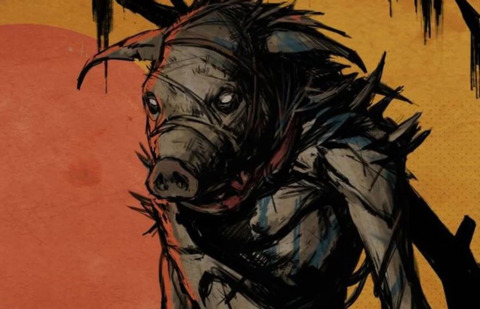
The game's concept is brimming with potential. Your character comes to inhabit the lives of several people from disparate backgrounds in turn, gradually peeling back the layers of the world and the mystery at its core by viewing it through a variety of societal contexts. How does the world regard a well-reputed gunslinger as opposed to a hunter from an indigenous tribe as opposed to a man with a pig's head where his human head should be? What parts of civilization do they have access to? What do their various skillsets bring to the table?
None of this potential is reached in practice. The town may regard a bestial pig-man with slightly more trepidation than the gunslinger, but only slightly more. The indigenous hunter's skills may be slightly different, but not in a meaningful enough way to impact the moment-to-moment gameplay or narrative. You get to explore new parts of the world, but more out of random circumstance than anything that links directly back to individual identity.
In some ways, Weird West reminds me a lot of the first Assassin's Creed. That game was also fairly lackluster, barely a skeleton of an experience, but you could see how if they added some meat to the bones, it could become something truly special. The eventual success of Assassin's Creed II proved that out, and I can only hope that the Weird West developers will be given an opportunity to take this outline of a game and flesh it out in a Weird West 2.
Runners-Up: Bayonetta 3, Pentiment
Best New Character
Morlund (Horizon Forbidden West)
Most of the major characters and storylines in Horizon Forbidden West center around survival and being strong. It is a post apocalypse after all, and everyone needs Aloy's help to fight the humans attacking them, fend off the robotic dinosaurs threatening them, and fix the old-world technology that has broken down on them. Everyone, that is, except Morlund.
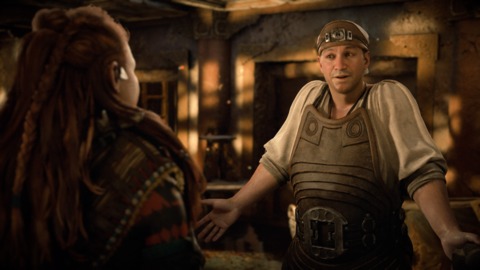
You meet Morlund and his crew in the ruins of Las Vegas, where sand dunes have risen to cover all but the top few floors of the tallest buildings. Morlund is a skilled adventurer and a genius inventor. In this world he'd be expected to apply his talents to building deadlier weapons and sturdier defenses, and likely would have found great fortune and recognition in doing so, but that's not what speaks to his heart. What Morlund yearns to do, more than anything, is tell people stories, and what he needs out of Aloy is someone to believe in him.
TJ Thyne, the voice of Morlund, does an expert job bringing out Morlund's infectious enthusiasm and starry-eyed ambitions in every interaction. Morlund has dedicated his life to the belief that people need more than survival, they need wonder and joy. There's probably something in there to do with the pandemic and the state of the world and the myriad existential crises that made me feel so moved by his storyline.
As Aloy stands alongside Morlund and his crew, having successfully delved into the ruins of Vegas beneath the sands, the whole strip comes to life with fantastical floating holograms. They had originally come here in search of gadgets that they could bring home to enhance their productions. Instead, Morlund decides he's going to stay and try to build the world's greatest show out of Vegas itself, a spectacle so inspiring that people will travel from far and wide to see it. And you are reminded of the life that could exist if Aloy succeeds in her quest to make the world a less hostile place.
Runners-Up: Angrboða (God of War: Ragnarök), Marissa Marcel (Immortality)
Best Moment or Sequence
Arriving in Plainsong/As Before We Are (Horizon Forbidden West)
A major theme of Horizon Zero Dawn was legacy. Aloy was a literal chosen one, a character who had genetically inherited the struggles of the old world and needed to come into her own power in order to save humankind from those past mistakes. In Horizon Forbidden West, that major theme has shifted to harmony. In order to save the world from this new threat Aloy needs to unite the various skirmishing factions and learn to lean on the strength of her closest allies.
Early in Forbidden West, while Aloy is still insistent on working alone, propelled by the messiah complex she developed in the previous game, she experiences a shocking revelation followed by a grievous injury. Her closest ally, Varl, rescues her and takes her to the unfamiliar Utaru tribe for healing. Aloy tries to strike off again on her own long before she has fully recovered, but Varl manages to convince her to rest, then travel to the main Utaru settlement of Plainsong to seek information and aid.
One of my favorite things to do with worldbuilding, particularly collaborative worldbuilding, is to start with a small kernel of an idea and grow it out into a full concept. Before there was an Utaru or a Plainsong there were seven plowhorns, uncorrupted robots built for the sole purpose of sowing seeds and tilling soil. When the first Utaru came to the lands, they found an abundance of food in fields that were effortlessly maintained by the plowhorns that they came to refer to as "land-gods." Naturally it follows that they were able to settle and flourish as an agrarian society. But what if the Utaru's land-gods also periodically emitted tones from a major scale?
As Aloy approaches Plainsong, the first thing she takes in is the towering verdant structure, a city of foliage grown into and atop of a set of massive satellite dishes. The second thing she notices is the chorus. What the Utaru came to regard as the land-gods' song caused them to develop a culture of music. They named their gods Do, Re, Mi, Fa, So, La, and Ti, and all throughout Plainsong the song of the chorus echoes. The harmonies are intricate and the progressions ethereal. There is a precision of pitch and melding of tone that is only possible when an ensemble is listening fully to one another.
The beauty of the song itself was striking enough to make it one of the most memorable moments I had all year, but that it comes at this point in Aloy's journey, when she has to accept her own limitations and open herself up to trusting in the strength of others, and now is confronted by the the awe-inspiring beauty that is only possible by a community performing in perfect consonance, that makes this moment stand out among all others.
Runners-Up: Fertile Rondo (Bayonetta 3), Grow Vast and Strange (Citizen Sleeper)
StarvingGamer's Top 10 Games of 2022
10. Triangle Strategy
2022 truly was the year of tactics, and Triangle Strategy is just an incredibly solid tactical RPG.
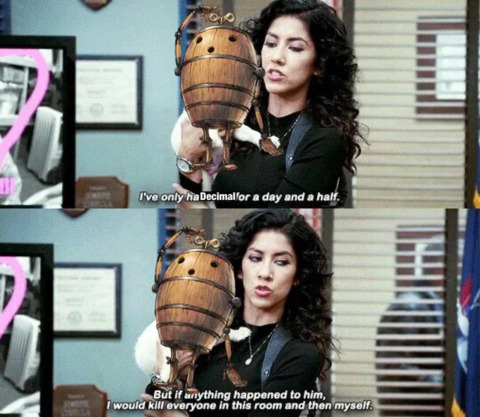
To tell the truth, I actually found the surrounding package to be fairly lacking. The branching narrative often has to make illogical leaps to get the story back on track depending on the choices that you make. They try to tackle the subject of slavery as a primary plotline and fumble it spectacularly. If you somehow end up siding with the slavers in the end, the ending you get is one of the worst things I have ever seen. The supporting characters are all basically absent from the narrative, despite the incredibly interesting insights they could have regarding the ongoing conflict and each other. Imagine having recruited military commanders who were on opposing sides of the previous war, and they never interact or even acknowledge one another!
Mechanically, the characters are all mostly static. You have one or two minor tweaks you can do to the way a character performs in battle, but for the most part their strengths and abilities are predetermined. There is actually basically no strategy, just a thin veneer of systems between battles meant to serve the tactical layer.
So really it's a testament to the strength of the core gameplay that I still found the game so engaging that I beat it four times in order to see every path and unlock the secret ending. While the characters are static, their toolsets are unique enough to make every combination of party members an interesting puzzle box of potential. The maps are inventively constructed with every imaginable layout, enemy composition, and a variety of unique environmental conditions and effects layered on top. By the time I reached the level cap with everybody, I had my go-to team figured out, but even then it was still enjoyable to flex my power and dominate every encounter at the highest difficulty level.
If they end up making a sequel, I don't think I'm even going to be looking for the deeper strategy layer and more customizable characters I was initially hoping for when I started playing this game. All they need to do is write a more cohesive and politically aware story, and maybe make the secondary character actually feel like they exist alongside the main cast. This first entry is already doing what it needs to do when it comes to satisfying tactical gameplay.
9. Fire Emblem Warriors: Three Hopes
I already decried how disappointing an entry in the Musou genre the original Fire Emblem Warriors was. It was shockingly barebones. What little narrative existed was extremely underwritten and generic and there was almost nothing to do in the game outside of battle after battle after battle. When Three Hopes was announced, I assumed it minorly iterative at best.
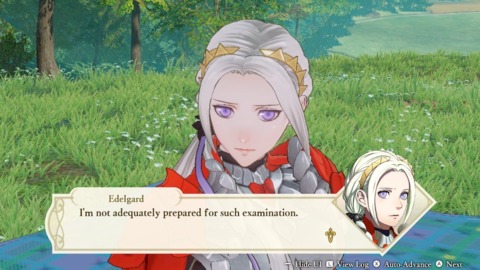
When I found out what Three Hopes was actually going for, I was all the way back in.
Three Hopes is an alternate retelling of 2019's excellent tactical RPG, Fire Emblem: Three Houses. Just like Three Houses did for the Fire Emblem series, Three Hopes exploded the breadth of things to do between battles. You're overseeing training, setting daily tasks, maintaining and upgrading your base, and socializing with your companions and watching them socialize with each other. The narrative is able to leverage the well-developed political landscape of Three Houses and its dramatic, if straightforward plot is bolstered by being in context with the story that Three Houses already told.
Perhaps not most importantly, but as a nice little bonus for me, the new focus character Shez's introduction to the storyline at a critical juncture gives Edelgard the opportunity she needs to break free of her narrative trajectory and avoid committing the various atrocities other players denounced her for in Three Houses in pursuit of a distant greater good. She was incredibly complicated and compromised in a way that made her my favorite character in Three Houses, but all the same I appreciate this small vindication of my faith in her.
8. Mario + Rabbids: Sparks of Hope
Remember what I said about the year of tactics?
This is another game I was side-eyeing on the lead up to release. I had heard they were moving from tile-based movement to radius-based movement. This may not mean much to most people but to me, radius movement has traditionally led to nothing but frustration. When you're locked to a grid and moving a given number of tiles, it is very clear exactly where you can get to and what you can do once you get there. When moving in a radius there's always the chance of being just a few centimeters out of reach of whatever it is you're trying to do. It's an added layer of uncertainty that often impedes the ability to play carefully and tactically.
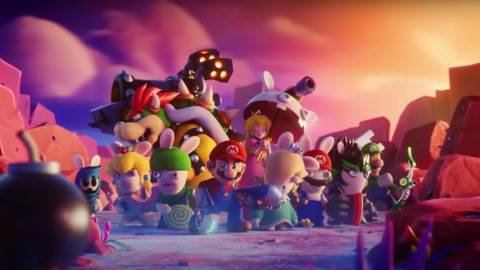
I am happy to say I was 100% wrong in my early assumptions. For all the precision that grid-based movement added to the first Mario + Rabbids, because of the various things that could occur as part of that movement, you had to chart out each character's path ahead of time and commit to it. Once a character had access to all of their late-game options, getting the most out of a single turn could require a significant amount of forethought. Many players were understandably turned away by this spike in complexity and the increased difficulty that went along with it.
While I still bumped up against a pixels-out-of-reach movement radius several times while playing through Sparks of Hope (and the penalty for not reaching a cover point could be severe), what I didn't anticipate was how the radius movement would free me to utilize each character's actions and tools moment-to-moment, without needing to extensively plan or commit. The ability to feel my way through every turn on the fly made the game feel much snappier and digestible. Instead of costing me an entire battle, bad decisions could usually at least be partially walked back to mitigate the consequences.
The game still gets more difficult, particularly in the latter third, but the ramp up is much more gradual and I can't help but wonder if players who we dissuaded from completing the first game might not have a much more positive experience seeing Sparks of Hope through to the end.
I'm not here to be a radius-based movement evangelist or anything, I still think grid (or hex) is the way to go for most tactical experiences, but I can't deny that it was absolutely the correct choice to make Sparks of Hope shine so much brighter than the original Mario + Rabbids.
7. Bayonetta 3
If Triangle Strategy was a game where the strength of the gameplay overshadowed the weakness of the narrative, Bayonetta 3 is that amplified several times over. While 2022 may have been the year of tactics, there hasn't been anything close to a year of character action games in over a decade, if ever. Fans of the genre have to take what they can get, especially when a quality title comes like Bayonetta 3 which only happens every once every few years.
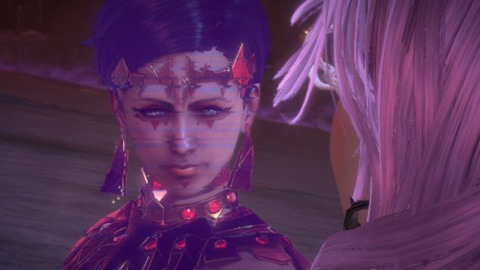
Count me in the camp of people who believe comphet has absolutely poisoned people's minds and that it's the only lens through which the decisions made in Bayonetta 3's narrative make any sort of "sense." They try to throw an emotional punch that doesn't have any impact unless you're willingly ramming face-first into their hamfist of a plot. There are about a million and one ways they could have closed out this trilogy with the same narrative trajectory without having to Rise of Skywalker everything leading up the climax, and yet in their limited imaginations the writers couldn't dream of anything beyond what comphet dictates.
So really my immense frustration with the story should be a testament to how enjoyable I found the gameplay, given that it landed on my top 10 at all, let alone at a very respectable #7. The freeflowing combat style still clicks with me much better than the more precision-based entries in the genre. The new demon mechanics combined with the excellent assortment of weapons gave me the options I needed to find a playstyle that felt right in my hands. And the new character is fun and interesting (despite the frustrating context she exists within) and has me hopeful for the future direction of the series.
6. God of War: Ragnarök
Other than being the year of tactics, 2022 was also a great year for sequels to rise above the faults of their predecessors. 2018's God of War reboot was a game that played excellently, but took place in a soulless world with empty writing solely concerned with hitting plot beats without doing the requisite work of building out character arcs.
Ragnarök continues to hit with its combat. The Leviathan Axe is as fun to throw as ever, and the all-new third weapon that you acquire later into the game is so enjoyable to wield, I wish I had access to it from the start. The collection aspects are still best-in-genre and the environmental puzzles are complex enough to require a few moments to suss out without being so opaque as to stymie the game's momentum. Gameplay-wise the game is very iterative, but that's to be expected when you're starting with such a strong foundation.
Meanwhile, the narrative has been shored up significantly. The game is written-through in a way that tensions are given the proper space to build so when the big moments come, they feel earned (outside of a few major flubs). Atreus's writing shines in particular. He feels much more like an actual kid than an adult's conception of a kid, and having a much wider variety of characters to interact with helps him develop into a fully realized character.
The game world, or at least parts of it, also has actual people living in it now. Being able to see dwarves in Svartalfheim and Aesir and even Midgardian refugees in Asgard makes the nine realms seem like actual places worth defending, not just a series of theme park stages to do murders in. There's still a degree of disconnect I experienced due to the intensely narrow corridors the game's artificial boundaries placed me in through a majority of the game. I could have done with a glimpse into what the day to day life of the elves in Alfheim looks like when they're not attacking you like mindless drones. I'm still not sure whether there is anyone I should be protecting Vanaheim for that couldn't just fit into Brok & Sindri's house. But it's not an empty world any more and that's important.
The writing is still really weird about moms. I'm not seeing what they were going for with Deborah Ann Woll as Faye and Sif's presence is so meagre she feels like cut content. But with the series seemingly shifting to focus more on Atreus and away from his father-son relationship with Kratos, maybe the women in the next God of War will be given the space to be as thoughtfully characterized as the men.
Speed sledding #PS5Share, #GodofWarRagnarök pic.twitter.com/5O1Ot2gpnT
— The Starving Gamer (@StarvingGamer) November 18, 2022
5. Immortality
What's the opposite of damning with faint praise? Lauding with faint critique?
A lot of the positive reception around Immortality centers on the story within the story, the layer of narrative hidden beneath the surface that speaks to humanity, spirituality, and a little bit of creepypasta. Unfortunately, that part didn't really work for me. Some of this probably is due to the fact I was playing on PC, and the nature of the mouse & keyboard controls means that, along with many other players, I didn't discover the way to access a deeper facet of the hidden layer until I had it explained to me by someone else, long after I had hit a dead end and exhausted most of the content I knew how to access. By that point, the very mechanical way I was trying to scrape through clip after clip of footage I had seen a dozen times before in the hopes of randomly stumbling across a new crumb of narrative made me disinvest from that part of the game entirely.
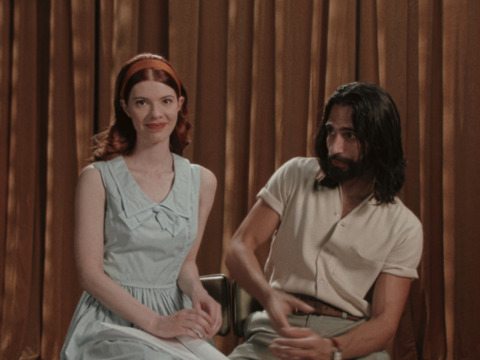
Ultimately, that doesn't matter, because I am still blown away by that first layer, the mismatched cut-up footage from the unreleased career of Marissa Marcel. It is, frankly, a crime that breakout star Manon Gage didn't win best performance at The Game Awards this year. No disrespect to Christopher Judge, he always puts in a solid day's work, but the ask of Manon Gage to play three different versions of an actor living in three different eras of film with significantly different personal motivations, then portray that actor actually acting as several different characters across those three films, all while keeping the suggestion of the hidden narrative at the core of every moment on screen, was absolutely immense. That she pulled it off so convincingly is a testament to her singular talent.
All the work surrounding her is breathtaking as well. Every actor behaves like they were plucked straight out of the era they're representing. The filmmaking techniques behind all the footage feels genuine. I don't know what filters they used to replicate the unique qualities of film from each era, but usually when people try to do that you can point and the screen and say, oh they're using a 1960s filter. Every second of the game looks like it was actually shot using that ancient equipment.
Sam Barlow also continues to excel in assembling a compelling web to untangle. He gave his writers the freedom to create their own scripts as movies with no knowledge of the hidden layer, then worked backwards to decide which parts should be table reads, which should be blocking rehearsals, which should be actual shoots, and how to layer the second narrative underneath all of it in a way that felt like it was the plan all along. Before you even discover the hidden layer, piecing together the actual plots of each of the three films is extremely satisfying, as the films themselves have their own mystery elements to them. The decision to portray these different stages of filmmaking also provides a rare glimpse into the nitty gritty process that goes into creating a final product.
There is an argument to be had for the "cake and eat it too" attitude the game has towards its portrayal of Hollywood's treatment of women, both the characters and the real people playing them. When you're replicating the objectification of a young actress cast in a raunchy 60s exploitation film, you're going to run the risk of exploiting the real actress who is portraying that fictional actress. However, both Gage and producer Natalie Watson have spoken extensively about how closely they collaborated to ensure that the script and shoots were altered wherever necessary to ensure that the actors were comfortable with what they were being asked to do. Gage speaks fondly of the lack of a hierarchy on set; everyone's input was welcome and valued. Combining all this with the fact that they also worked closely with Jean Franzblau, an intimacy coordinator, I'm more than willing to give them the benefit of the doubt.
4. Marvel's Midnight Suns

Year of tac-tics! Year of tac-tics! (Honorable mention to Tactics Ogre: Reborn which I have only just started playing.)
I already talked about how much of a pleasant surprise Midnight Suns was, but it cannot be overstated just how far they went with the writing. They literally went from the least writing in gaming with their XCOM series to the most writing in gaming with Midnight Suns. There's a real Silver Age comics feel to the focus on superhero downtime in the game. You can easily end up spending more time hanging around your base than you do in the actual card game battles. From exploring the grounds, to chatting up the other heroes, to participating in fun side-activities and small excursions, the game does exactly what you want out of a big roster mash-up. You get to watch these big, dynamic, diverse personalities bounce off each other in a social setting, before seeing the ways their awesome powers compliment each other on the battlefield.
Best of all, by giving the player a self-insert character in the form of The Hunter, you get to be at the center of all of it. Every character brings their unique perspective to The Hunter's situation. Their personalities, thoughts, and opinions feel ripped straight out of the comic books. The game is even fully aware that Tony Stark sucks! And for the most part, their individual decks do an excellent job of portraying the unique qualities of their powers and fighting styles. Captain Marvel could do with a bit of a rework, though.
Firaxis really swung for the fences with this game and they knocked it out of the park like they were Steve Rogers. At this point I almost feel like I need to buy the DLC regardless of how worth it or good it ends up being simply because maybe my dollars will be what tips the scale in convincing Disney to greenlight a Midnight Suns 2. Even if you don't care about Marvel or hate the MCU or maybe especially if you hate the MCU, as long as you can get behind the idea of hanging out with your cool half-vampire bro who gives it to you straight and also relies on you to be his wingman and have some sort of affinity for tactics and card games, I strongly recommend you give Midnight Suns a shot. But also the Avengers suck OG Midnight Suns 4 lyfe!
3. Citizen Sleeper
More like Citizen Sleeper-hit amirite?
The roots of the cyberpunk genre come from writers in the 60s expressing their speculative concerns about the trajectory of technology, and by the 80s with a particular focus on where that technology might intersect with the growing force of corporate capitalism. It has, in the past, served as a call to political actions lest these concerns become a reality.
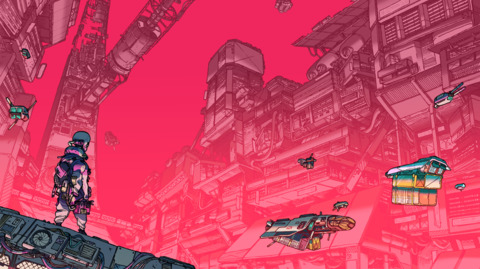
Here we are in 2022 and the steampunkification of cyberpunk has completely overtaken the genre space in popular media. This year's Cyberpunk Edgerunners series has received almost universal praise as an excellent work of cyberpunk fiction, but that sense of political urgency has completely vanished. People point at the brief flash of privatized healthcare failing a person and say how very of the moment, how political, how now, without realizing that that's the problem. Reality has all but caught up to the dystopia cyberpunk was warning us about 40 years ago. There is no call to action, no bucking against the system. The characters in Edgerunners don't even comment on it or even regard it at all. They just accept the status quo and move on with their crime adventure. Cyberpunk has been reduced to a cool aesthetic no deeper than wearing a stovepipe hat with a few gears stapled to the side and lightning in a tube.
That's why works like Citizen Sleeper are so precious and above all else necessary to move the genre forward. If we, as a society, have failed to heed the warnings of Cyberpunk, the next step if for the genre to show us a way out.
Citizen Sleeper features that same anti-capitalist struggle but also lets you explore a number of different ways we might break free from corporate capitalism's shackles, some reflective of movements happening in our modern day, and some speculative about the ways technology might open us up to freer forms of existence. It's not a road map but it is a beacon, a light at the end of the tunnel reassuring us that there is a way through dystopia to a better world on the other side, a world that exists in kindness and community.
As far as I'm concerned, that's what it takes to be received as an excellent work of cyberpunk fiction in 2022.
2. Butterfly Soup 2
Butterfly Soup 2 is, in many ways, just Butterfly Soup 1 but more. It follows almost immediately on the events of the original game. There's more cute artwork, more exploration of what it means to be raised as a first generation Asian-American, and more of Brianna Lei's heartfelt and believable teenage writing. And given how head over heels I was for the first game, that would have been enough to land it on my top 10 this year. But when I say that Butterfly Soup 2 is just Butterfly Soup 1 but more, what I really mean is that Lei is succeeding in doing so much more with her writing than the previous game.
Butterfly Soup 1 is, for the most part, a very straightforward teenage love story. There is some light commentary on anti-Asian racism, homophobia, and glimpses into the different forms of abuse inflicted on two of the characters by their parents. Min-seo's father's short temper and destructively violent outbursts is the heaviest topic that gets a meaningful amount of focus, but the bulk of the narrative is dedicated to teen love and hijinks.

The story of Butterfly Soup 2 is "more" in that it's much more nuanced. Along the way Lei digs much deeper into many different forms of racism, from appropriation, fetishization, and the ways that even people who believe themselves to be antiracist can nonetheless stumble into acting casually racist. A lot of the non-conforming gender identity stuff hinted at in the first game is made more explicit. She also takes a closer look at what it is like being an immigrant parent raising a first-generation child, and the experiences that motivate their controlling behaviors. Except Min-seo's dad, because he deserves no understanding or attention.
The real standout is Noelle's mom whose scary black silhouette from the first game has been replaced with a fully drawn character sprite. She is treated with much more sympathy, as she is given space to be a better person than the glimpses of her at her absolute worst in the first game. I'll let you discover the details for yourself (the game is free but also you should give Lei money), but the major event in Noelle's arc hit so close to home it felt like parts of it had been ripped straight out of my own life. This is where I start tapping the "representation matters" sign.
There was a sort of unstoppable narrative velocity to the romance in the first game. Min-seo is consistently characterized as someone who drives straight at the heart of what they want and who smashes every obstacle out of their way. This time around, however, things take a much more winding path. Ultimately, Lei hits upon an ending that is very different but absolutely on-brand for the people involved.
So please, download the game. Download both! Play them and love these kids as much as I do, and join me as we wait who knows how many more years for Butterfly Soup 3.
1. Horizon Forbidden West
Despite its spot at the top of this list, I feel it's important I start out by addressing one of the biggest oomphs of Forbidden West. I, for the most part, buy the premise of a post-racial society in the world of Horizon. It's a far flung future where people have zero historical context for the racism that exists in our world today, and within the game's fiction every culture basically woke up from their birthing pods or what have you in groups of what we would understand today as mixed ethnicities. Maybe there's some sort of different racism that might spring up in this situation but I don't begrudge Guerilla Games for not going out of their way to invent it.

On its face, the colorblind casting/writing makes sense. Aloy is still a white woman because, well, you know (money), but everyone else is just the character they are. They have cultural identities tied to the tribes they were born into or the communities they've become a part of, but no racialized identities. When Varl steps up to be Aloy's closest peer in Forbidden West, he isn't stepping up as a black man, but as a friend and confidant and fellow member of the Nora tribe which is why he was raised to develop a similar skillset.
That's why when Varl dies at the end of the second act, it makes a lot of narrative sense on paper. He is where he is at the time because he's the one Aloy trusts the most to handle this critical part of the plan. If we're looking for that emotional gut punch, no other character falling here would be nearly as meaningful. Varl has known Aloy from the start of her journey and is the closest thing she has to family. Unfortunately, it's impossible not to view that moment through our own cultural context and see a black man dying to heighten the emotional stakes of a white woman. I get why the writers thought this was the best choice for the narrative but I also have to acknowledge how much it sucks.
Gee, that's a lot of words dedicated to breaking down one of the biggest failings of my favorite game of the year. So let me list off some of the things the game did right to elevate it so high in my ranking.

The combat itself has received more of an evolution than the iterative upgrade you normally expect from a sequel. Enemy variety and behaviors have been broadened, and the properties of the various weapon types made more diverse. This means methodically disassembling robotic dinosaurs has taken on a much more "right tool for the right job" dynamic as opposed to the "one bow fits all" balance of the first game. The melee system has been expanded significantly to the point where fighting human enemies plays like a different game entirely. The new skill system also serves to let you really hone in on the style of play that works for you, and give your favorite weapon types access to all-new functionalities.
Narratively, because this game is about Aloy learning to rely on others, the cast of central characters has broadened and Aloy gets to spend a significant amount of time with each of them, deepening her relationship with friends old and new. Literally every performance is a home run, bolstered in no small part by excellent performance capture tech that permeates the game in a way that only a massive budget can afford. Over the course of the game Aloy interacts with probably over a hundred NPCs, and every conversation that isn't an in-game walk-and-talk seems to have gotten the full performance capture treatment with the very natural movements, expressions, and body-language that comes with it. Even background animations like two Tenakth warriors sparring in one of their camps were made using motion capture.
Ashly Burch's performance shines in particular. She's been one of my favorite voices in the industry since the first Life Is Strange and, much like Manon Gage in Immortality, Burch gets to show off in Forbidden West by playing three different characters. She already portrayed Aloy and Elisabet Sobeck, the woman Aloy was cloned from, in Zero Dawn. Forbidden West introduces the new character Beta who is yet another Sobeck clone but one whose upbringing couldn't have been more different from Aloy's. Burch fully embodies each of them with their own emotional honesty, and I can only hope they keep adding more Sobeck clones so that in a few games Burch can challenge Tatiana Maslany (#1 in my heart) to the throne of being a bunch of different people at once.
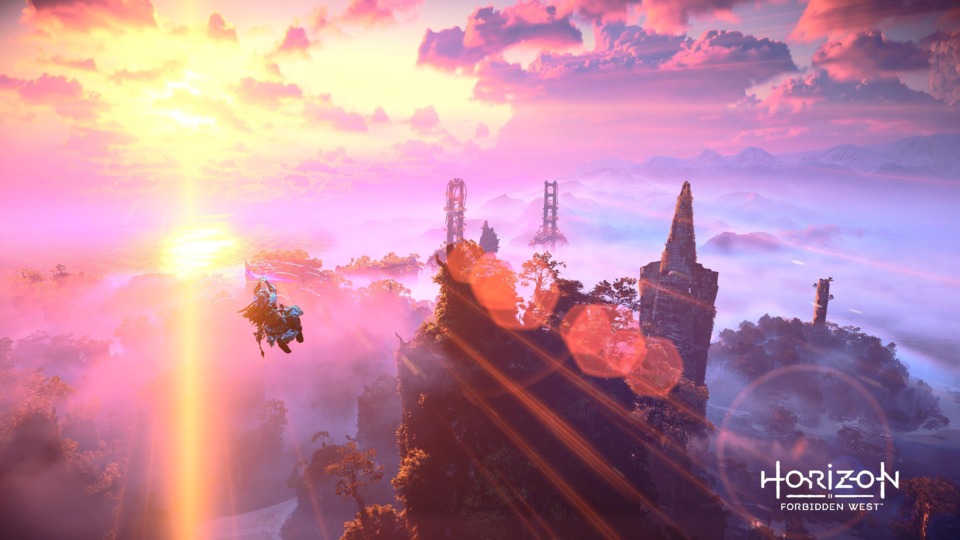
Horizon's game world is dense but sprawling in a way that makes it feel much more like a real place than most open world games. There is a lot of believability to the ways the developers have imagined the people of the world building their structures and society around the remains of the old world. As a current bay area resident, I got a special kick out of traveling over what I believe were the sunken remains of the bay bridge to reach San Francisco where I had my spouse help me find the ruins of the office building she currently works in. As an Angeleno at heart, I can't wait for the upcoming DLC so I can see what the future holds for my hometown.
Despite the loss of Varl, Aloy has developed such an amazing roster of close allies and with all the ways the plot of Forbidden West has expanded on the series' lore, there are countless directions I can imagine for the future of the series to head in. All that's left to do is wait to see what lies... beyond the Horizon (*sunglasses* yeaahhhhhhhhhhhh!).
